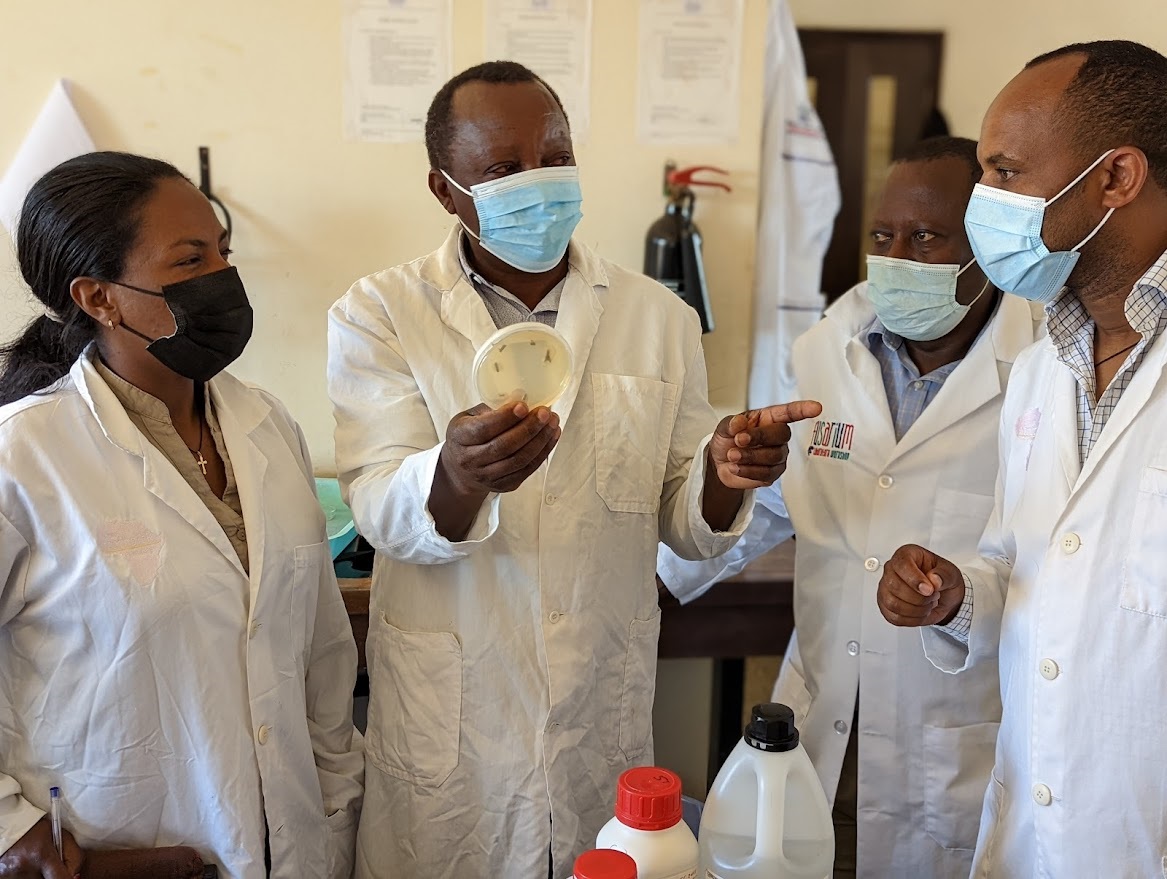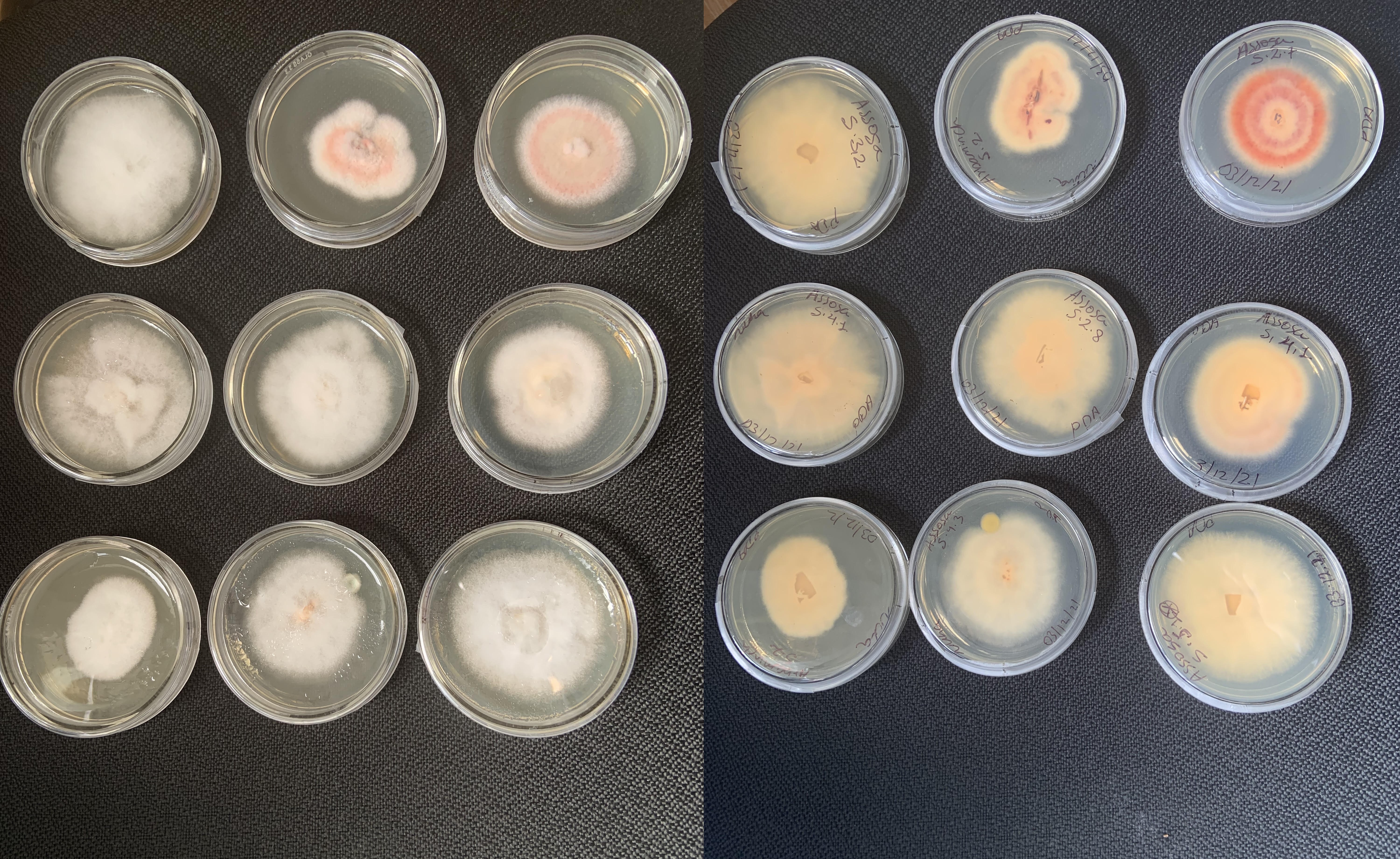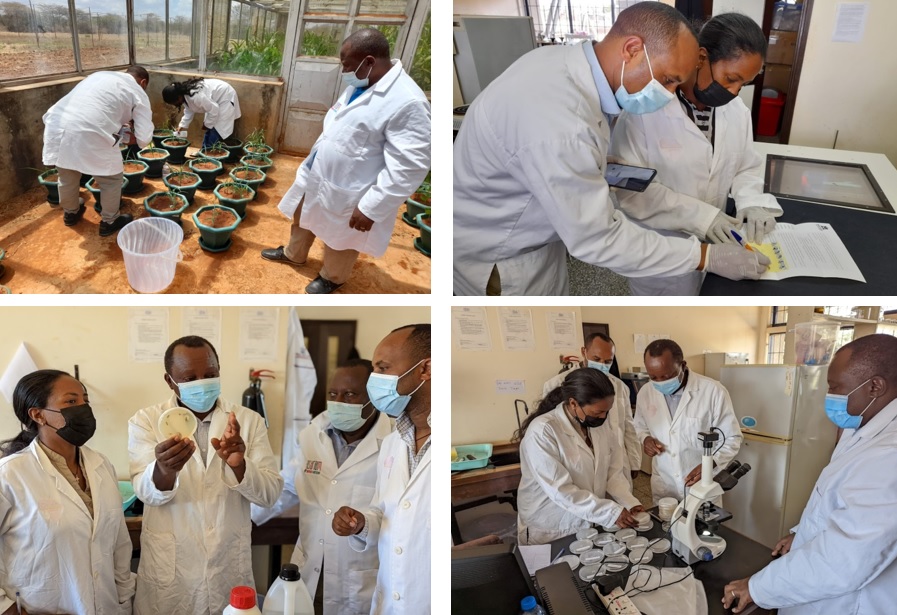The nature-based solution against the witchweed for increased food security to Ethiopian smallholder farmers
Agriculture is the main contributor to the economies and livelihoods of Ethiopia, contributing 41% and 80% to the GDP and overall employment of the country (Matousa et al, 2013). Smallholder farmers that mainly cultivate cereals dominate crop production in Ethiopia.
Striga hermonthica (witchweed), known in Ethiopia as Akenchira in Amharic, is a parasitic weed that attacks cereal crops such as sorghum, millet, maize and rice in Africa and significantly reduces yields.
Striga can cause yield losses ranging from 20 to 80%, severely threatening the livelihoods of smallholder farmers. Various mechanical and chemical measures, including hand weeding, crop rotation, intercropping, fertilizers, and herbicides have been developed to control Striga. However, the adoption by farmers remains limited due to reasons that include the high costs and lack of awareness.
In recent years biocontrol has gained considerable attention as a promising nature-based supplement to other control methods. Biocontrol involves using natural enemies like insects and fungal antagonists instead of chemical pesticides to control pests.
The toothpick project has been one of the innovative products selected by the Cultiv@te project of Singapore centre for innovation and technology and the UNDP Accelerator Lab to conduct a field test in sorghum and maize growing areas of smallholding farms. This innovation is a nature-based solution, as opposed to chemical products applied to fight this weed that would have negative consequences on the environment and human health.
The Accelerator Lab had facilitated a knowledge transfer visit between the Ethiopian biotechnology institute (EBTi) and the Kenyan lab. The EBTi scientists have adopted the biological herbicide development protocol into the Ethiopian context. According to the institute, the application of this protocol is of use for a wide range of crops beyond sorghum and maize, which could be a game-changer in cereal production.
One such bio-control solution is ‘The Toothpick Project’, an initiative spearheaded by Dr David Sands of Montana State University. This involves using a highly virulent fungal pathogen viz. Fusarium oxysporum f.sp. Striga(FOXY), which is originally isolated from Striga.
The name of the project comes from the use of toothpicks on which the primary inoculum of FOXY is grown on it. The toothpick which carries FOXY is sealed into a plastic straw and gets delivered to the farmer. Consequently, the farmers prepare the secondary inoculum by placing the toothpick into cooked rice using a sterile plastic container and culturing for three days. Half a teaspoon of the secondary inoculum goes into each seed hill during planting, and the resulting product, called FoxyT14, is trademarked in Kenya as Kichawi Kill.
FoxyT14 is a cost-effective and easy to distribute and use bio-control solution for Striga. Field trials among smallholder farmers in Kenya demonstrated an increase in maize yields of 42-56%.
Through Cultiv@te, UNDP seeks to introduce FoxyT14 in Ethiopia. UNDP facilitated a research collaboration between the Toothpick Project and the Ethiopian Biotechnology Institute (EBTi) to identify Ethiopian local Foxy strains, field trials on different crops, and evaluate the efficacy of locally identified strains compared with commercially available strains.
The project hopes to radically transform Striga control and management in Ethiopia using local FOXY strains for bio-control, leading to at least a 20% increase in yields of cereal crops and consequently improved food security and livelihoods for Ethiopian smallholder farmers.
Sample collection and isolation of Fusarium
The EBTi team has collected wilted Striga weeds from two regions (Southern Nations Nationalities and People Region- Arbaminch area and Benishangul-Gumuz-Assosa area) in the 2021 cropping season.
Thirty-five samples were collected from four Kebels (smaller administration units). Fusariums were isolated from the collected Striga samples at Ethiopian Biotechnology Institute (EBTi) mycology laboratory (Fig 1).
Twenty-four Fusarium isolates were identified for further characterization.
Fig 1. Local fusarium isolates identified from wilted striga sample collected from Assosa and Arbaminch
Exposure visit
Research partnership and experience sharing among the project members of African countries is crucial for research capacity building and efficient skill transfer. In this regard, the Toothpick Project and Kenya Agriculture and Livestock Research Organization (KARLO) organized an exposure visit for the Ethiopia and Cameron research team at KARLO laboratory, Katuman, Kenya, in November 2021. Two researchers from EBTi participated in this exposure visit with the support of the UNDP-Ethiopia accelerator lab.
The exposure visit helped to establish a network between researchers doing the same work and also enhance the skill of the project team members. Also, it creates a platform for the researchers from three Toothpick project member countries to visualize and understand the project implementation in each respective country. It has given the team an opportunity to engage in discussions with the research teams and the toothpick project manager.
The exposure visit played a role in building research collaboration and facilitating the project implementation. Considering the need to further strengthen the research collaboration among the member countries, the participants were able to identify potential research ideas for further collaborations.
Fig 2. EBTi researchers during exposure visit on toothpick project at KARLO laboratory, Katuman, Kenya
The next activity involves the Ethiopian Biotechnology Institute and UNDP accelerator lab conducting experimentation, evaluation and validation of isolated FOXY strain at the laboratory and field level.
In parallel, samples collection will continue, and Fusurim will be isolated from Striga hot spot regions (Amhara and Oromia). The selected local FOXY strain, and the appropriate methodology for the preparation of fresh on-farm inoculum technology, will be investigated. Upon the successful completion of the on-farm evaluation of the technology, it will be scaled up in the major Striga infested regions of Ethiopia. Accordingly, this technology will be trademarked and commercialized in Ethiopia. These activities are undertaken by application for additional funding and connected with government technology incubation centres.

 Locations
Locations


